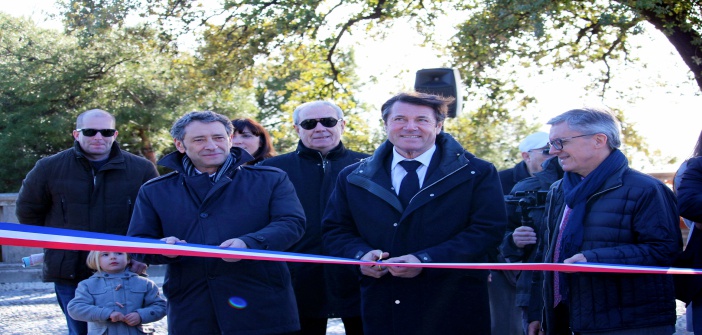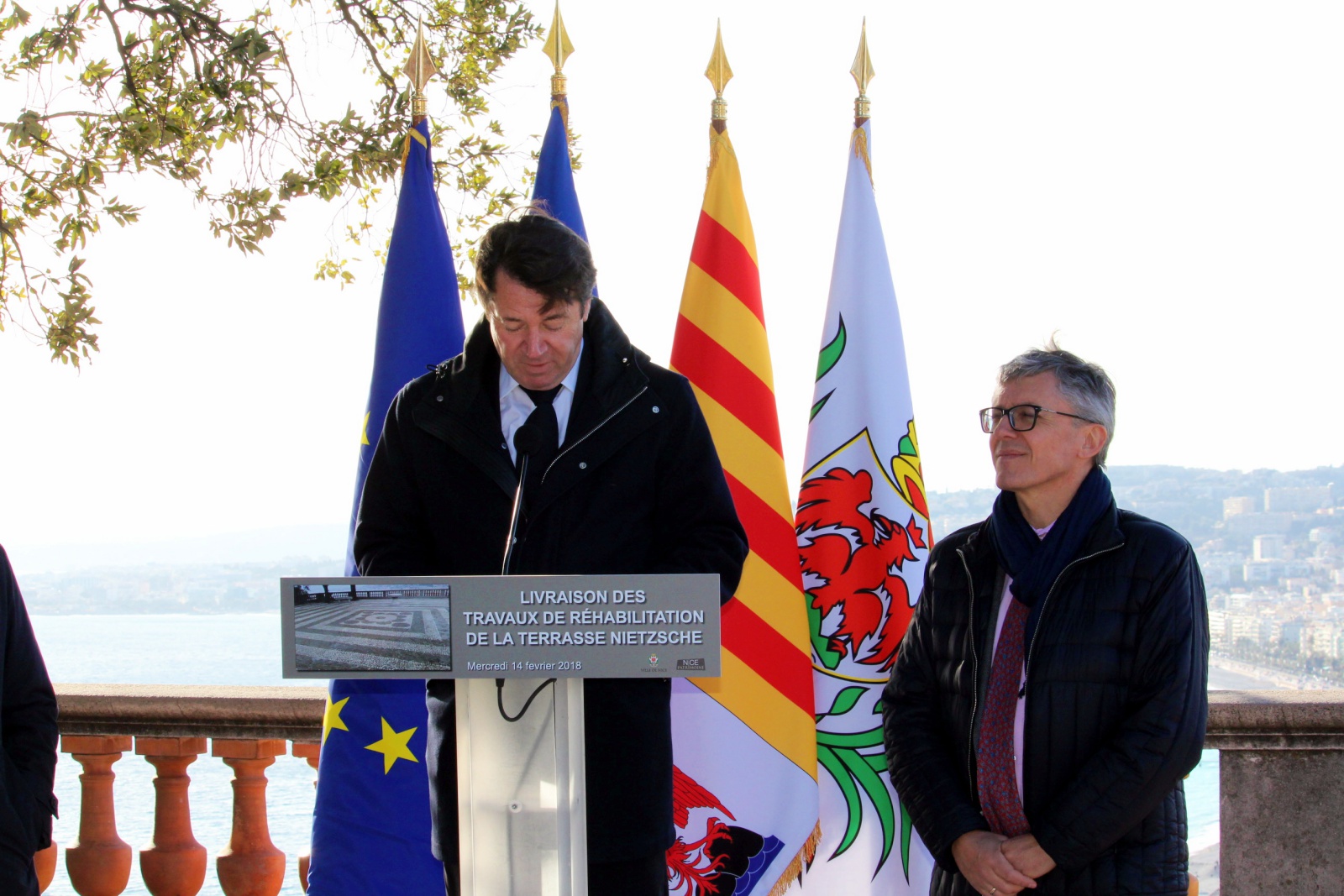Yesterday afternoon, Christian Estrosi, the mayor of Nice and President, presented the new landscaping developments of Castle Hill, an iconic site of Nice’s heritage, which had not undergone maintenance work for 80 years.*
He was visibly delighted to deliver the Frédéric Nietzsche terrace, an exceptional viewpoint overlooking the city offering a postcard panorama.
It was also an opportunity to review this project.
The Landscaping and restoration of the Castle Hill park are part of an ambitious reflection comprising several coherent projects for the entire site over a 15-year period.
The mandate set by the city hall is to offer a more qualitative public space, based on three main principles:
– an improvement in the readability of park accessibilities
– the construction of large balconies overlooking the sea and the old town with visual links between the inside and outside of the park. Balconies to rediscover the landscape structures that existed at the park’s creation.
– The preservation, restoration, or clearing of key landscape features of the site, such as the follies, the waterfall, the Bellanda Tower, or the corbelled viewpoints over the port.
The aim is truly to enhance the site by relying on strong ideas drawn from the park’s very identity.
Reconnect with a romantic garden
Christian Estrosi aims to rediscover the soul of the castle of Nice by rewriting its most structuring characteristics: the plant cover, the atmospheres, the light, the landscape viewpoints, the fountains and waterfalls, its ruins…
To achieve this, the city hall aims to renew the Mediterranean forest planted on the slopes, offer a new wooded green space on the upper plateau, and ensure the sustainability of the ridge line in the vast landscape.
This approach to landscape rehabilitation is carried out with great concern for integration at various scales of the city.
The heritage restoration, apart from the built elements or ornamentation, will also involve the preservation of vegetation and a reasoned management of its renewal. Whether it concerns herbaceous, shrubby, or tree species — with an aim to preserve biodiversity and improve the soil quality of this green space.
This development project thus complements many actions undertaken since 2008 to reintroduce nature in the city, with the creation of landscape parks or green islands in neighborhoods, the preservation of natural spaces, the creation of a green framework across the old city, or the outline of the Promenade du Paillon.
<img47380|center>
To carry out this project, 13 municipal councilors were appointed during the vote on Friday, April 1, 2016. The assembly of this committee is intended to support and enrich the reflection on this project, which is essential for the preservation of this foundational site chaired by Jean-Luc Gag.
<img47382|center>




